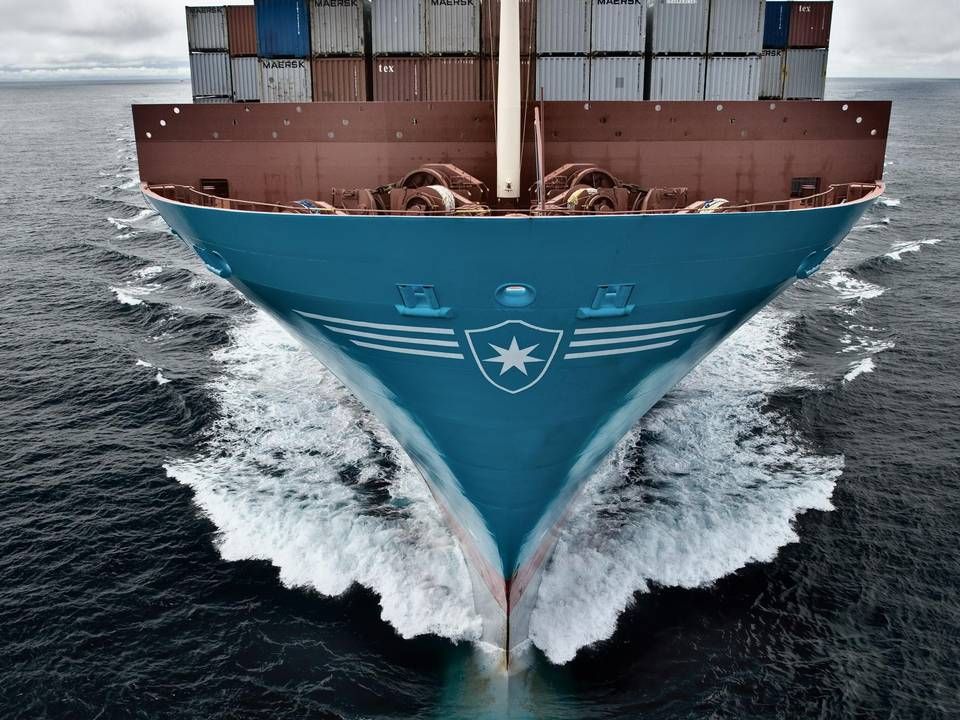Hapag-Lloyd's deficit grew in Q1 2017

The improved freight rates on the container market along with greater volumes boosted Hapag-Lloyd in the first quarter but not enough to pull the carrier out of the red.
Revenue grew 10.4 percent in the first quarter to EUR 2.13 billion (USD 2.3 billion) for the German carrier, up from EUR 1.93 billion in the first quarter 2016.
But the first quarter result did not keep up and came to a deficit of EUR 62.1 million, which is a setback from the same period last year, in which the loss was EUR 42.8 million.
Rising bunker prices in particular, which were also highlighted by Maersk Line as a main cause of its first quarter deficit presented last week, take the blame for Hapag-Lloyd's result as well.
"At 313 USD/tonne, the average bunker price was clearly above the previous year's figure of 197 USD/tonne. This is the highest level seen since June 2015," Hapag-Lloyd writes in the report.
Lower future expenses
In an analysis of the report, Clarksons Platou stresses that expenses for ports and terminals, along with staffing costs, rose to high levels for the carrier in the first quarter.
"That said, management highlighted that there is some seasonality in 1Q costs which we can confirm by looking at costs per TEU. We therefore expect costs to come down again in upcoming quarters," writes the analyst agency and continues:
"Year over year, we calculate that unit costs were 2% lower, even including the higher fuel bill. The favorable years with double digit decline in unit costs thus seems to have ended (last year unit cost fell 13%). That said, the expected $435m synergies from the UASC merger could alone cut costs by 3-4% per year from 2018-2019, in our view."
Waiting for effect from UASC acquisition
The CEO of Hapag-Lloyd, Rolf Habben Jansen, emphasizes in the interim report that the main focus of the first quarter was the merger with UASC and a positive launch to the carrier's alliance, The Alliance, which set sail on April 1 this year.
"The launch of the THE Alliance went well, and the merger with UASC will be closed shortly," he says adding:
"After the closing our priority will be to integrate UASC into Hapag-Lloyd quickly and to realize initial synergies from the merger."
Tough year for container carriers
The result from Hapag-Lloyd is the second large-scale loss from container shipowners during the first quarter as Maersk Line booked a deficit of USD 66 million in its report presented last week.
Taiwanese Evergreen Marine, on the other hand, booked an unexpected profit, as did Israeli Zim.
According to analyst Lars Jensen of Seaintelligence Consulting, there was too much optimism among container carriers in terms of 2017 expectations.
"I think that it's been a trend among container carriers to say that now, in 2017, things will go really well. I don't see 2017 being a good year for the container industry at all. I view this as a year with significant improvement over last year, but it's not that great to just be better than 2016 which was a disaster year for the market," said Jensen of Seaintelligence Consulting to ShippingWatch in relation to Maersk Line's report, adding:
"So nothing points exclusively to a positive development. There is ambiguity in the market this year."
English Edit: Gretchen Deverell Pedersen
Maersk Line's result is a concern for the entire industry
Related articles
Maersk Line's result is a concern for the entire industry
For subscribers
DSV CFO downplays impact of new container alliances
For subscribers
Maersk Line lost USD 66 million in Q1
For subscribers



















